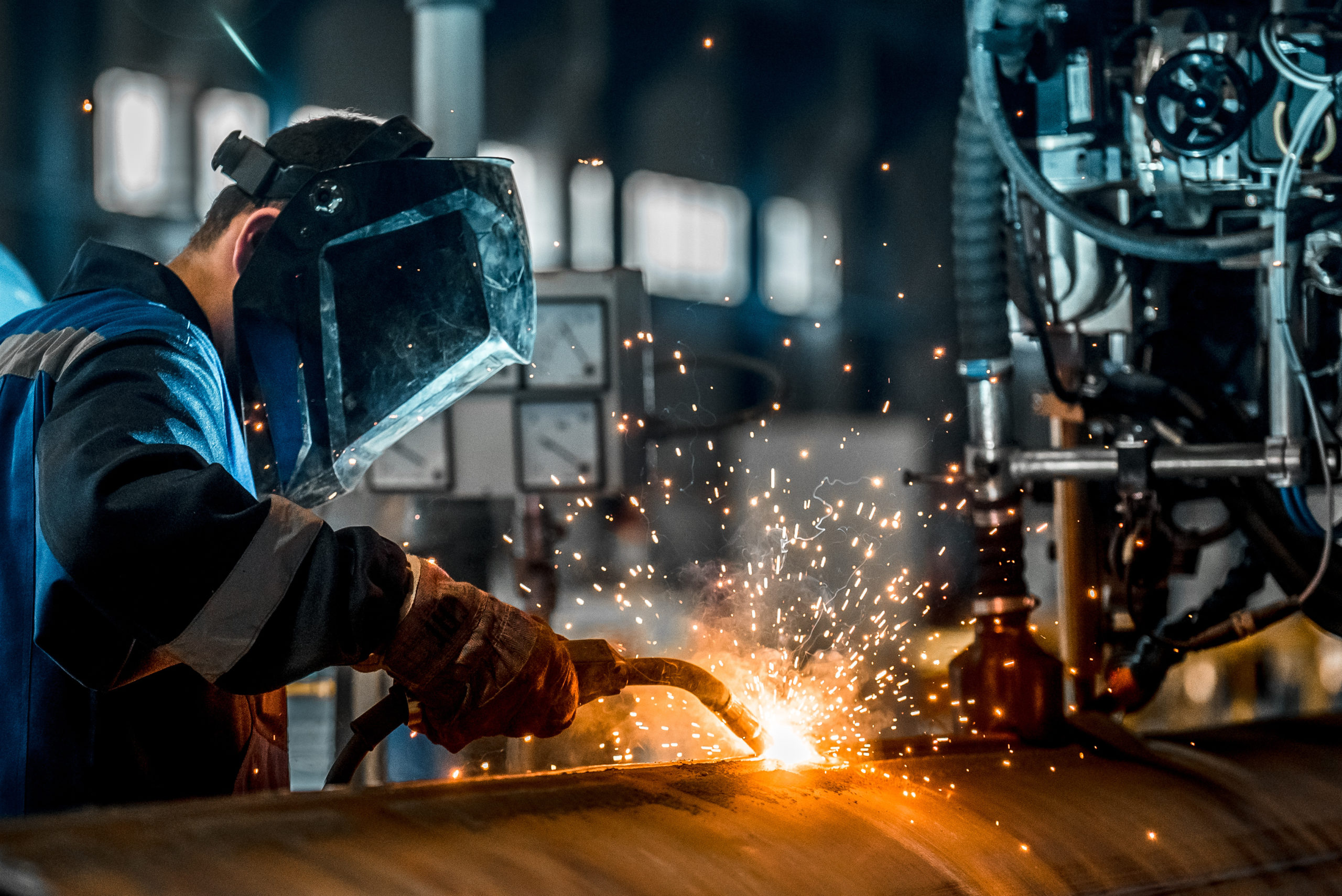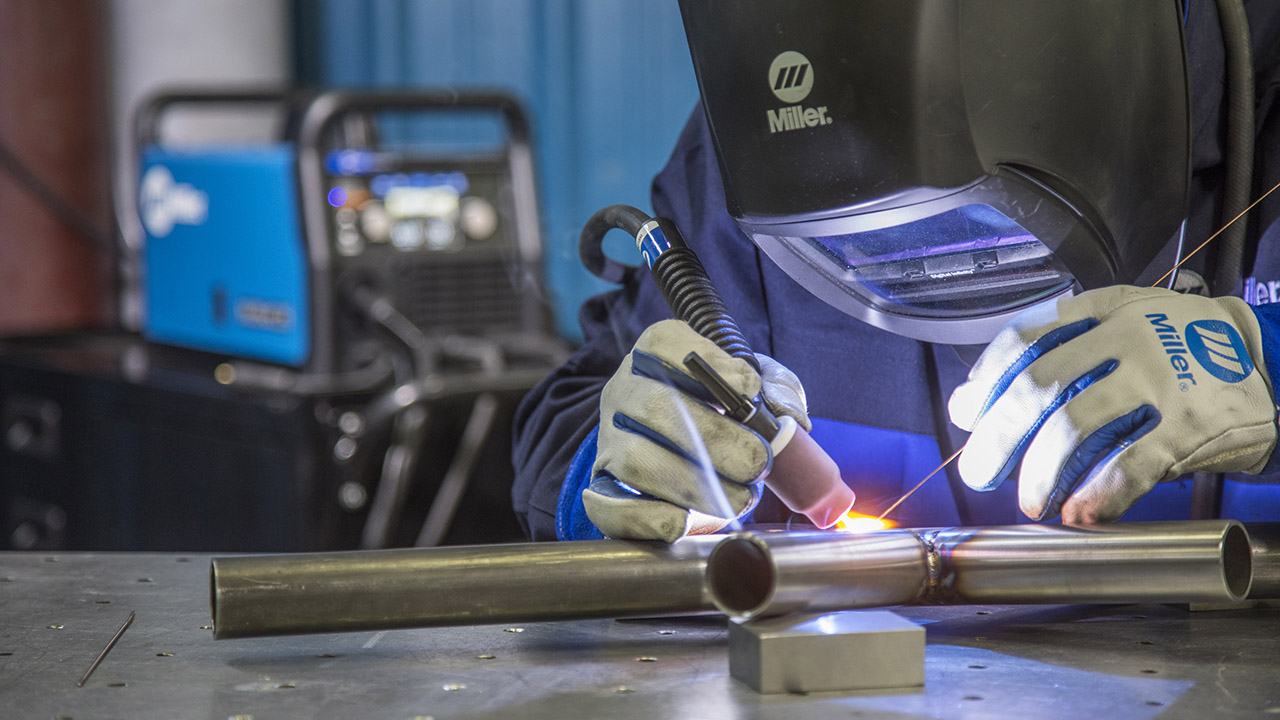Everything about Welding: Trick Insights Into Techniques and Ideal Practices for Success
Welding incorporates a selection of methods, each matched for details materials and applications. Comprehending these methods, such as GMAW, SMAW, and TIG, is crucial for achieving suitable outcomes. In addition, the appropriate tools and safety methods can not be ignored. As preparation and troubleshooting play critical duties in the welding procedure, understanding these elements can greatly enhance the high quality of the end product. What are the crucial aspects that ensure a successful weld?
Understanding Various Welding Methods
Welding techniques include a selection of approaches, each fit to particular applications and products. Amongst one of the most common strategies are Gas Metal Arc Welding (GMAW), Protected Steel Arc Welding (SMAW), and Tungsten Inert Gas Welding (TIG) GMAW, likewise called MIG welding, is popular for its speed and flexibility, making it ideal for slim materials. SMAW, or stick welding, is favored for its simpleness and effectiveness in exterior environments, specifically with thicker metals. TIG welding uses accuracy and control, making it suitable for complex work and non-ferrous metals (Montana Mobile Welding and Repair Belgrade Welding). Each method has its one-of-a-kind benefits and considerations, enabling welders to pick the most effective technique based on the project's demands, product type, and desired results. Comprehending these techniques is crucial for successful welding
Crucial Welding Devices and Devices
While different welding methods need particular abilities, the right equipment and devices are similarly vital for attaining quality results. Essential welding tools consists of welding makers, which differ depending on the technique-- such as MIG, TIG, or stick welding. Safety equipment, consisting of aprons, headgears, and gloves, guarantees security and comfort throughout the procedure. Additionally, components and clamps assist secure materials in location, ensuring accuracy in welds. Consumables like welding rods, cable, and protecting gas are likewise important elements that influence the quality of the weld. Additionally, tools such as cutters and mills help with surface prep work and post-weld completing, contributing to an expert result. Buying high-quality devices inevitably boosts the performance and efficiency of welding tasks.
Security Practices in Welding
Proper safety and security techniques are essential in the welding sector to secure workers from potential risks. Welders must put on ideal individual protective devices (PPE), consisting of helmets with appropriate shading, gloves, and flame-resistant clothing. Ample ventilation is vital to lower exposure to harmful fumes and gases created during the welding process. Furthermore, employees should be learnt the right handling of welding equipment to avoid mishaps. Fire safety measures, such as keeping combustible products far from the welding area and having fire extinguishers conveniently available, are required. Routine inspections of equipment and offices can help determine possible threats before they cause crashes. By sticking to these safety and security practices, welders can produce a much safer working setting and lessen risks connected with their trade.
Preparing Products for Welding
Preparing materials for welding is an essential step that substantially influences the quality and stability of the last item (Fabrication). Appropriate prep work involves cleaning up the surface areas to get rid of contaminants such as dirt, corrosion, and oil, which can jeopardize the weld. Techniques such as grinding, sanding, or utilizing solvents are frequently employed to achieve a tidy surface area. Additionally, making sure that the products fit together snugly is essential; gaps can cause weak welds. It's additionally vital to take into account the alignment and positioning of the components, as this will certainly influence the simplicity of welding and the final outcome. Selecting the ideal filler material and ensuring compatibility with the base metals is crucial for achieving strong, sturdy welds.
Tips for Achieving High-Quality Welds
Achieving high-grade welds requires interest to information and adherence to finest techniques throughout the welding procedure. Correct joint prep work is vital, guaranteeing surfaces are cost-free and clean from contaminants. Picking the suitable filler material and welding strategy based upon the base metals is critical for perfect bonding. Keeping constant travel rate and angle while welding can promote and avoid flaws harmony. Furthermore, regulating heat input is crucial; excessive warmth can lead to bending and damaged joints. Frequently evaluating the welds during the process permits immediate modifications if essential. Lastly, employing suitable post-weld therapies, such as cleaning and tension alleviation, can boost the toughness and stability of the weld, eventually making certain an effective result.
Troubleshooting Common Welding Issues
Welding usually provides challenges that can influence the top quality and stability of the end product. Typical concerns such as porosity, irregular weld grains, and getting too hot can emerge, each needing specific repairing methods. Comprehending these problems is crucial for welders to enhance their skills and accomplish perfect outcomes.
Porosity Problems Discussed
Porosity can often be forgotten, it stays a critical concern in welding that can jeopardize the stability of an ended up product. Porosity refers to the visibility of tiny gas pockets within the weld bead, which can lead and weaken the joint to premature failing. This trouble generally emerges from impurities, wetness, or improper shielding gas insurance coverage throughout the welding procedure. To mitigate porosity, welders should confirm that the base materials are clean and dry, use ideal shielding gases, and maintain regular welding criteria. Consistently inspecting the equipment and atmosphere can likewise aid recognize potential problems prior to they show up in the weld. Addressing porosity effectively is important for achieving solid, resilient welds that meet top quality standards.

Irregular Weld Beans
Irregular weld grains can substantially affect the high quality and strength of an ended up product. Various variables contribute to this concern, including incorrect travel rate, incorrect amperage settings, and inconsistent electrode angles. When the welder moves too rapidly, a grain may appear slim and lack penetration, while relocating also slowly can create excessive build-up. In addition, utilizing the incorrect amperage can result in either damaging or excessive spatter, both of which concession weld integrity. The welder's technique, such as inconsistent torch activity, can also result in unequal grain look. To alleviate these issues, welders must concentrate on maintaining stable, controlled activities and making sure proper devices settings to achieve harmony in their welds. Consistency is key to accomplishing strong and reliable welds.
Overheating and Warping Issues
Too much warm during the welding procedure can lead to significant overheating and deforming concerns, impacting the architectural integrity of the work surface. These issues usually show up as distortion, which can jeopardize positioning and fit-up, making more assembly testing. Elements adding to overheating consist of the option of welding criteria, such as voltage and take a trip speed, as well as the kind of material being bonded. To reduce these problems, welders should preserve regular traveling speed and ideal cjp weld warm input while checking the work surface temperature. In addition, preheating or post-weld heat therapy can help minimize visit the website anxieties brought on by fast air conditioning - Belgrade Fabrication. Regular inspection and adherence to finest techniques are vital in preventing overheating and guaranteeing the longevity and dependability of welded frameworks
Regularly Asked Concerns
What Are the Occupation Opportunities in the Welding Industry?
The welding market provides varied career opportunities, consisting of positions as welders, examiners, engineers, and instructors. Professionals can work in manufacturing, building and construction, aerospace, and auto industries, gaining from solid need and competitive wages in numerous duties.
Just How Can I Boost My Welding Speed Without Compromising Top Quality?
To enhance welding speed without sacrificing quality, one need to practice efficient strategies, maintain tools, optimize settings, and enhance hand-eye sychronisation. Normal training and seeking feedback can also significantly add to achieving quicker, top quality welds.
What Qualifications Are Readily Available for Welders?
Countless accreditations exist for welders, consisting of those from the American Welding Society (AWS), the National Facility for Building And Construction Education And Learning and Research Study (NCCER), and different industry-specific companies. These qualifications enhance employability and demonstrate skill efficiency.
Just How Does Welding Impact the Characteristics of Metals?
Welding influences the residential or commercial properties of steels by changing their microstructure, which can bring about changes in hardness, ductility, and toughness. Warmth input and cooling prices throughout the process considerably influence these product features.
Can I Weld Dissimilar Metals Together?
